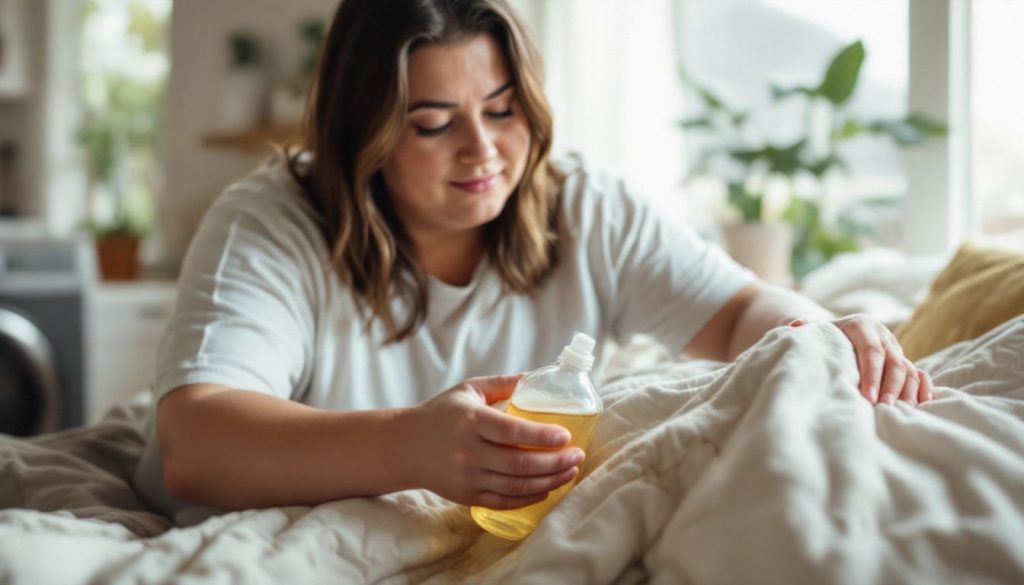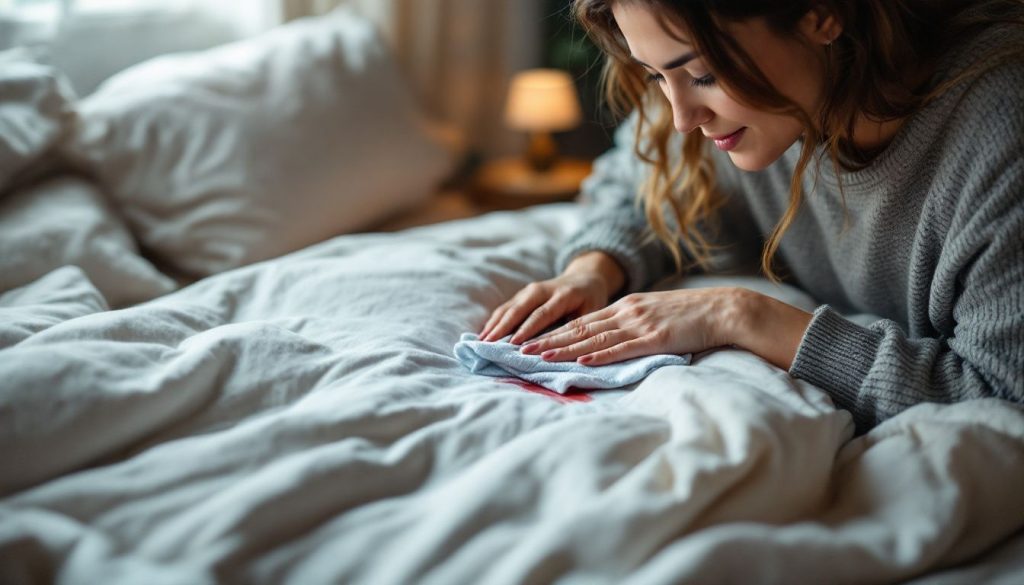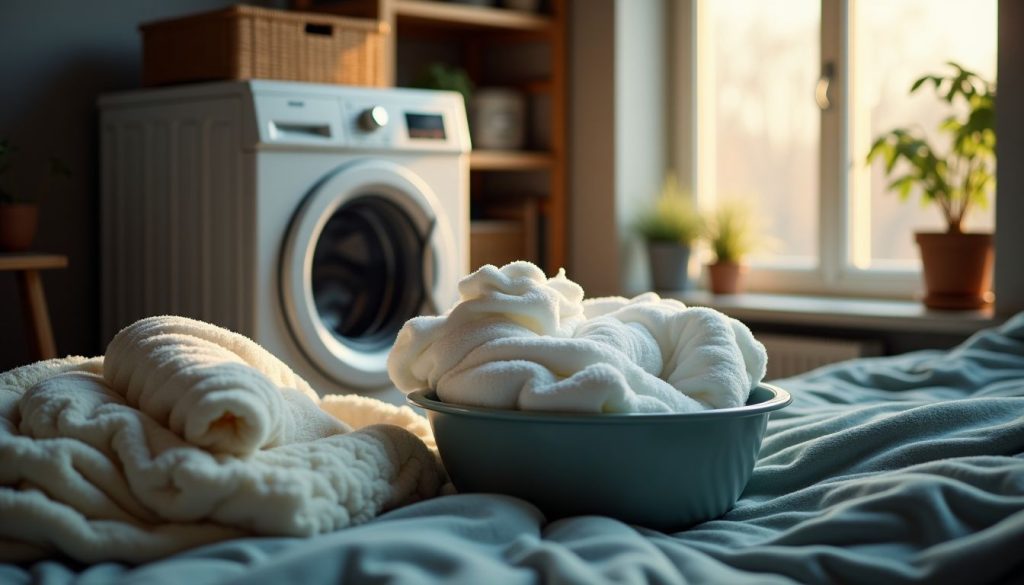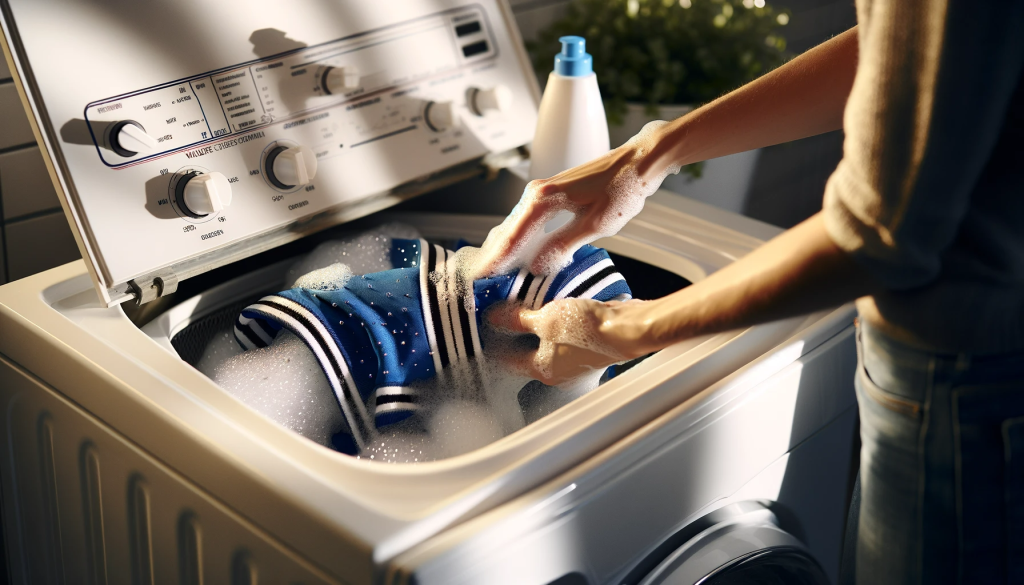Don’t let pesky stains spoil your comforter’s allure! With simple DIY methods, you can effectively remove blemishes using everyday items like vinegar and baking soda. Dive into the guide and discover how to keep your bedspread spotless with tips from InktasticMerch for a cleaner, cozier bedroom experience.
Mishaps are part of life, and they can be particularly inconvenient when they mar your comforter with unwelcome stains from food, beverages, or other accidents, making it lose its cozy appeal. You might doubt the feasibility of tackling these blemishes at home without damaging your bedspread. However, you’ll be surprised to learn that many stains can be eradicated using common household items. In this guide on “How To Remove Stains From Your Comforter,” we’ll unveil simple DIY methods for conquering those bothersome marks.
Armed with our advice, you’ll have your comforter looking pristine again before you know it.
Key Takeaways
- Use household items such as baking soda, vinegar, and Woolite for potent stain-fighting. These elements are gentle on the fabric and environmentally benign.
- Act promptly with spot cleaning to hinder stains from becoming embedded. Swift action simplifies the removal of stains like juice, wine, or blood.
- Refer to the care label before laundering to prevent issues like shrinking or discoloration. Adhering to these instructions is crucial.
- Hand wash delicate materials with mild soaps and cold water. For machine washing, opt for a large-capacity washer with a gentle cycle and a mild detergent.
- Consider utilizing professional cleaning services for tough stains or comforters that necessitate dry cleaning to ensure thorough cleaning without harm.
Preparing Your Comforter for Cleaning

Read the Care Label
Always inspect your comforter’s care label for specific washing instructions. Certain comforters, particularly those filled with down, may need dry cleaning to preserve their quality. Following these directions helps prevent fading or shrinking.
Spot Clean Early Stains
Address stains promptly upon discovery. Early intervention with spot cleaning helps stop blood or grease from settling into the fabric. Gently dab the stained spot with cold water using a clean cloth—avoid rubbing to prevent deepening the stain.
DIY Stain Removal Solutions

Tackle comforter stains effectively using everyday household materials. These solutions are both simple and suitable for a range of textile types.
Baking Soda and Water Paste
Combine 4 tablespoons of baking soda with ¼ cup of cold water to form a paste. Apply the concoction to the stain and let it stand for approximately 30 minutes. Gently scrub with a soft brush or cloth, rinse using cold water, and blot dry. This non-toxic remedy is compatible with most fabrics.
Gentle Cleaning Agents Like Woolite
For minor stains, dilute Woolite with water and gently apply it to the affected area using a soft cloth. This mild cleaner is ideal for delicate fabrics, efficiently removing stains without harm. Ensure to rinse thoroughly afterward.
Vinegar and Water Solution
Create a solution with equal parts water and white vinegar for an effective cleaning agent. Dab the stain with a cloth dipped in this mixture, avoiding aggressive scrubbing to protect the fabric. This eco-friendly method is safe for most comforters.
Cleaning Specific Comforter Stains

Juice & Wine
Quickly rinse fresh juice spills with cold water to avoid permanent stains. For more persistent juice marks, apply a little Tide HE Turbo Clean detergent and blot gently with a clean cloth.
When dealing with wine stains, absorb as much liquid as possible without scrubbing. Then, combine one part vinegar with two parts water and softly dab the mark.
Vaseline
To handle Vaseline stains, first scrape off extra residue with a blunt knife. Next, apply a solution of equal parts vinegar and water, dabbing the spot with a cloth. Conclude by machine washing the comforter using liquid detergent.
Yellow Stains
The yellowish discoloration from sweat, oils, or detergent can be remedied with lemon juice. Apply it to the discolored areas and place the comforter under direct sunlight for several hours. Alternatively, use a vinegar and water mixture, spray onto stains, sprinkle with baking soda, and gently scrub.
Makeup
Makeup marks, particularly from foundation or mascara, can be persistent but are removable. Begin by lightly scraping any excess with a blunt knife or credit card.
For liquid foundation or makeup, mix mild dish soap with cold water. Dab the stain with a cloth soaked in this solution, ensuring not to rub it in. Blot gently until the stain lifts. For tenacious makeup stains, dab with a cotton ball moistened with makeup remover before laundering.
Address mascara or eyeliner stains by applying a few drops of rubbing alcohol, blotting with a cloth, and thoroughly rinsing to eliminate residual chemicals before drying.
Blood & Organic Stains
Address blood stains by dabbing with cold water, then apply hydrogen peroxide directly to the spot. Allow it to fizz for a few minutes before blotting with a clean cloth. For organic stains such as food or sweat, utilize an enzyme cleaner, followed by a comprehensive rinse.
Washing Your Comforter at Home

Hand Washing Techniques
Immerse the comforter in cold water with a mild detergent for 15-20 minutes. Gently massage the fabric to dislodge stains, then rinse thoroughly. Dry by air on a rack or lay it flat—avoid twisting the fabric.
Machine Washing Tips
For machine care, employ a washer with at least 5.0 cubic feet capacity. Opt for a gentle cycle with cold or warm water, and a mild detergent. Post-wash, dry the comforter on low heat, incorporating dryer balls to retain its fluffiness.
Professional Comforter Cleaning

For challenging stains or those requiring dry cleaning, seek professional cleaning services. Specialists can deeply cleanse without harming delicate fibers, keeping your comforter fresh and inviting.
Conclusion
Maintain a pristine comforter with these straightforward DIY strategies. Timely spot cleaning saves both time and energy in the future. Always examine care instructions and employ gentle cleaning solutions like baking soda or vinegar for optimal outcomes. Regular cleaning will ensure your bed remains snug and inviting year-round!
Maintain the beauty and durability of your bedding with the information shared here. For more tips and insights on caring for your home essentials, explore our Blog.




